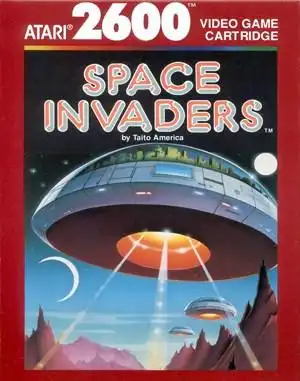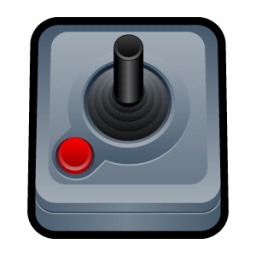The rhythmic thump... thump... thump of those descending aliens is a sound instantly recognizable to a generation. Before complex graphics and online multiplayer, there was the pure, unadulterated tension of defending Earth one pixelated shot at a time. And for many, that experience was defined by Space Invaders Atari 2600.
This wasn't just another game cartridge; it was a phenomenon. Released in 1980, the Atari 2600 port of Taito's arcade smash hit didn't just bring the arcade home – it arguably invented the concept of the "killer app" for home consoles, forever changing the video game landscape.
Bringing the Invasion Home
Back in the late 1970s, arcades were king. Space Invaders was eating quarters like they were going out of style. Atari, looking to boost sales of its Video Computer System (VCS, later known as the 2600), knew they needed that magic on their console.
The task fell to programmer Rick Maurer. Porting the complex arcade game to the notoriously limited 4KB ROM cartridge of the Atari 2600 was a Herculean effort. Initial interest within Atari was low until company head Ray Kassar saw the arcade's success and secured the rights. Maurer went back to work, cramming as much of the arcade experience as possible into that tiny space.
Gameplay on the Woodgrain Wonder
Playing Space Invaders on the Atari 2600 was a slightly different beast than the arcade. You controlled your laser cannon with that classic Atari joystick, sliding left and right along the bottom of the screen, firing upwards at the relentless rows of aliens marching down.
Your goal remained the same: blast every alien before they reached the bottom or destroyed your cannon. You had three defensive bunkers (one less than the arcade) that could be used for cover but were slowly chipped away by alien fire. Higher rows of aliens were worth more points, and a bonus "Command Alien" saucer would occasionally zip across the top for extra score.
More Than Just Aliens: The Unique Variations
One of the most memorable aspects of the Atari 2600 version was its wealth of gameplay options. While the core concept was the same, the cartridge offered variations not found in the original arcade game, adding significant replayability:
- Moving Bunkers: Your shields could shift left and right, offering dynamic cover.
- Zig-Zag Shots: Some alien shots wouldn't just drop straight down but would weave unpredictably.
- Invisible Invaders: Certain waves featured aliens that were only visible when they fired!
- Two-Player Modes: A groundbreaking addition allowing cooperative play, with options for players sharing control or splitting movement and firing duties.
These variations, born partly out of the technical constraints and partly from creative design, gave the Atari port its own distinct flavor.
The "Killer App" That Changed Everything
The release of Space Invaders for the Atari 2600 wasn't just successful; it was revolutionary. Before its debut, Atari VCS sales were decent but not explosive. After Space Invaders hit shelves in 1980, console sales reportedly quadrupled.
It was the first time a major, current arcade hit was available for play at home, and people flocked to buy the console just to experience it. This proved the viability and massive potential of the home video game market, particularly through licensing popular arcade titles. Atari's business strategy shifted dramatically, focusing heavily on bringing the arcade experience into living rooms.
While Rick Maurer, the programmer who made it happen, received only a small bonus despite the game generating over $100 million, his work laid the foundation for Atari's golden age and the home console market as we know it.
Reliving the Invasion Today
Does the pixelated charm of Space Invaders Atari 2600 hold up? Absolutely. While graphically simple by today's standards, the core tension and addictive gameplay are timeless.
Thankfully, you don't need to hunt down a working Atari 2600 and cartridge (though that's an awesome way to experience it!). You can revisit this classic via:
- Emulation: Emulators like Stella allow you to play ROMs of the game on modern computers.
- Modern Retro Consoles: Many plug-and-play consoles and collections, like the Atari Gamestation Pro, include the Atari 2600 version of Space Invaders pre-loaded.
- Digital Releases: While less common for this specific port compared to later versions, keep an eye out for official Atari collections on modern platforms.
You can often find digital archives of the original game manuals online, like at Archive.org, to get that authentic retro feel.
Final Thoughts: Why It Still Matters
Space Invaders on the Atari 2600 is more than just a classic game; it's a piece of history. It demonstrated the power of licensing, proved the demand for arcade-quality experiences at home, and solidified the Atari 2600's place as a cultural icon.
Its simple, yet challenging gameplay, combined with the unique variations of the home port, made it a staple of early 80s gaming. Firing that blocky laser at those descending aliens remains a pure, nostalgic joy.
FAQ
Q: How was the Atari 2600 version different from the arcade? A: The Atari port had fewer invaders (36 vs 55) and bunkers (3 vs 4) but added unique variations like moving bunkers, zig-zag shots, invisible invaders, and a two-player cooperative mode not present in the arcade.
Q: Why is the Atari 2600 Space Invaders considered so important? A: It was the first major arcade hit successfully ported to a home console and became a "killer app," dramatically increasing Atari 2600 sales and proving the massive market for home video games based on arcade licenses.
Q: Who developed the Atari 2600 version? A: The port was developed by Rick Maurer for Atari.
Q: Can I play Space Invaders Atari 2600 today? A: Yes, you can play it through emulators, on modern retro consoles that include Atari games, or by finding original hardware and cartridges.


